Articles of 2009
BRUTE XIII: The Calcitrator Became Incalcitrant
I left for the weigh-ins in time, I thought, to arrive a few minutes before the scheduled six o’clock start. But on the Capitol City Freeway I ran into the congestion from an accident. It hadn’t occurred on my side of the road, but the curious, or maybe even the empathic drivers on both sides of the highway—for it was a rather horrendous crash—put on their brakes to pay homage to a brown Honda that had climbed the guardrail and was now perched atop it.
When the traffic cleared, it was ten minutes after six and I was afraid I’d missed some of the ceremony. This was the first weigh-in I was attending as a journalist, and I wanted to see the whole spectacle. I exited onto Arden Boulevard, turned into the mall, and then sped through the parking lot to the Red Lion Inn. I parked and hurried holding my pad, which was growing damp from the sweat on my hand, through the lobby to the JB Lounge. The first man I recognized, sitting at a tall bar table alone, his hands on his forehead looking at some sheet of paper, a Raiders hat in exchange for his Stanford Cardinal, was the promoter, Nasser Niavaroni. He looked up when I came in, and I waved to him. “Hey, guy,” he said, almost grudgingly.
Deeper in the lounge, with his wide back to me, was Mark Wilkie. I went up to him and slapped him on his shoulder. “How are you, Mark?” I asked, and he turned to me and shook my hand.
“This is Jeff Berger,” he said, indicating a man in sunglasses and a black, v-neck shirt, who was sitting against the wall on the bench that ran along it. He was talking to a woman in a white, low-cut shirt, and he did not even look up to acknowledge that he’d been introduced. I remembered that Jeff owned the bar, and the semi-hotel around it, but we were not in Las Vegas, and he was not Dana White. Sensing that his boss was not, immediately or eventually, going to take off his sunglasses and say hello to me, Mark reached into his pocket. “I have your pass here.”
He handed me, not a pass, but a general admission ticket, which I thanked him for and put in my wallet. I told Mark that I would see him in a little while and took a seat at a table near the back of the room. I put down my pad and waited for something to happen. Other than Niavaroni and Wilkie, I recognized no one. I kept watching the entryway behind me, and within a few minutes, to my relief, Stan Martyniouk appeared with his father a few yards behind him. Stan went first to Niavaroni’s table, and then to Jeff Berger’s, and a few minutes later came and shook hands with me.
There was a young man at the table next to me, sitting alone, who, seeing Stan, asked, “What happened to Brandon’s opponent?” The Brandon he referred to was Brandon Gonzales, the middleweight who had, in May, been knocked down in the first round, and who got up for the second and knocked his opponent out with a hook to the liver.
“He dropped out,” said Stan. Hearing that, I looked over my shoulder at Niavaroni, and wondered if this wasn’t the reason he was holding his head in his hands.
Stan had things to attend to, such as weighing in, and he bade us farewell. I looked over at the bar, which was sunken below the floor, and surrounded by low chairs. There were two women in the depression mixing cocktails. They both had on short, black dresses, as the waitresses had at Tokyo Fro’s, and I wondered if Jeff Berger had designed these uniforms to celebrate the girls at the restaurant, or if by locating the offices of University Capitol Management next to Tokyo Fro’s he’d simply been making a gesture of aesthetic solidarity with Mr. Fro, possibly of Tokyo.
As I watched, a blonde girl in one of the aforementioned dresses climbed out of the basin and came towards me carrying a cocktail tray. She had a black choker around her neck, an accoutrement that went out of style when I was in the eighth grade, some time during the nineties, but which nonetheless divided beautifully the structural span of her shoulders from her delicate head. She stopped at the table next to mine and delivered a tall glass of Hefeweizen. Then she came to me and asked if I needed anything. I said that I was fine and thanked her.
Stan’s father, who had been sitting nervously on the other side of the lounge, got up to take a phone call and left. When he returned a few minutes later, he was with Gilbert, the man who had been holding the pads for Stan two days before. They were carrying a scale between them. I looked back over at Niavaroni, who was still frozen in his posture of despair, reading the same sheet of paper. I could imagine him shouting into his phone, “No, we don’t need a scale. I’ll just put one boy on my back at a time and make up a number. All right. Thanks, Lilly.”
After depositing the scale in front of the stage, Stan’s father, whose name I still didn’t know, went back to the chair he’d been sitting in before the call disturbed him. There was a long table with a bucket full of ice and water bottles downstage right, where Mark Wilkie had situated himself. Gilbert went up to say hello to him, and then struck up a conversation with a very broad and round black man. They were talking about James Irvin, the Sacramento-born light-heavyweight bitter scientist of modest UFC fame, whose sister, it should be said, I carried on a brief affair with in Paris in 2001.
Ten days before, on July 19, 2008, he’d fought the middleweight champion, Anderson Silva, and lost in a little over a minute. Silva, I must add, had moved up a weight class for the bout.
“What was he thinking taking on Silva?” the man said to Gilbert.
“I don’t know,” said Gilbert. I knew that Irvin had done some work at Niavaroni’s gym, and possibly also at Ultimate Fitness, in preparation for his much more successful fight in Colorado—an eight-second knockout of Houston Alexander, in April of 2008. Therefore, I wondered if Gilbert knew Irvin well, and if so, how unfavorably he was receiving the round man’s wisdom.
“A half-a**ed kick to the hip?” the round man was saying. He was referring to when, fifty seconds into the first round, Irvin kicked Silva in the thigh. This had only inspired Silva to catch Irvin’s leg and then punch him in the face. The fight ended with almost choreographical precision—kick, catch, punch, sweep, punch, the last four lines written for and delivered expertly by Silva—and left the calcitrator rather incalcitrant on the mat. For Irvin’s fans it was an embarrassing articulation of the disparity between the hometown military brutishness of Irvin, who looks like a battle-hardened Marine and makes a point of shooting his downed opponents after a knockout, and the humble, Brazilian grace of Silva, who after murdering Irvin knelt before him and bowed his head.
Beyond Gilbert, to the right of Mark Wilkie, was a young man with a shaved head. He was leaning forward in his chair spitting into a paper cup. I thought at first he was chewing tobacco, but then I noticed that his saliva was clear, and decided that perhaps he was a boxer trying to cut a final few ounces before getting on the scale. I glanced over at Stan’s father who was sitting again with his elbows on his knees, watching nervously as his son, behind me, talked with Niavaroni.
-
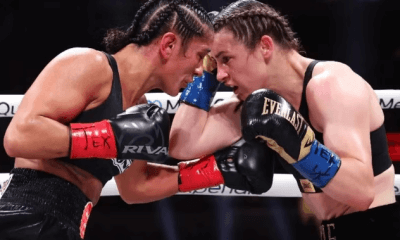
 Featured Articles3 weeks ago
Featured Articles3 weeks agoResults and Recaps from New York Where Taylor Edged Serrano Once Again
-

 Featured Articles7 days ago
Featured Articles7 days agoThe Hauser Report: Zayas-Garcia, Pacquiao, Usyk, and the NYSAC
-
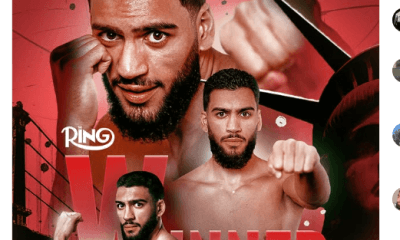
 Featured Articles3 weeks ago
Featured Articles3 weeks agoResults and Recaps from NYC where Hamzah Sheeraz was Spectacular
-
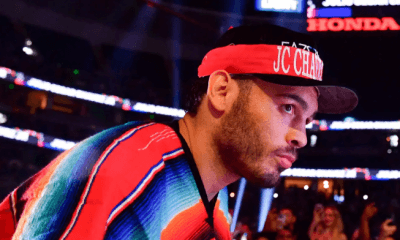
 Featured Articles4 weeks ago
Featured Articles4 weeks agoFrom a Sympathetic Figure to a Pariah: The Travails of Julio Cesar Chavez Jr
-
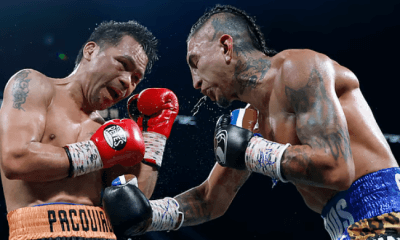
 Featured Articles2 weeks ago
Featured Articles2 weeks agoManny Pacquiao and Mario Barrios Fight to a Draw; Fundora stops Tim Tszyu
-
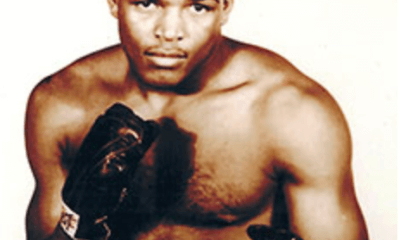
 Featured Articles3 weeks ago
Featured Articles3 weeks agoPhiladelphia Welterweight Gil Turner, a Phenom, Now Rests in an Unmarked Grave
-
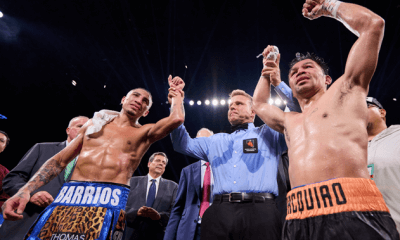
 Featured Articles2 weeks ago
Featured Articles2 weeks agoArne’s Almanac: Pacquiao-Barrios Redux
-
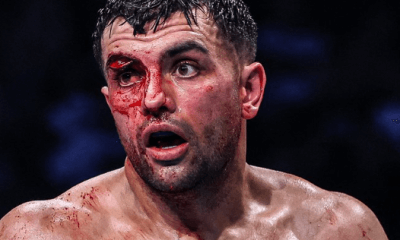
 Featured Articles4 weeks ago
Featured Articles4 weeks agoCatterall vs Eubank Ends Prematurely; Catterall Wins a Technical Decision


















